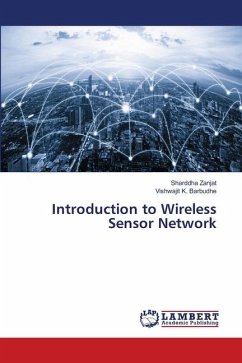The developments accomplished in the micro-electro-mechanical systems, digital electronics and wireless communication areas, navigated the development and application of the powerful and multifunctional sensor nodes, which are of lesser size and low cost. These nodes sense, process and transfer data over short distances. This feature eventually led to the cooperative use of these sensor nodes in huge numbers, called as Wireless Sensor Networks (WSNs).A WSN comprises a system of motes/sensor nodes which sense the environment under monitoring, and send this information through wireless links to the sink or Base Station (BS). The sensor nodes can be homogeneous or heterogeneous, and can be stationary or mobile. The gathered data is sent to the BS through single/multiple hops.
Bitte wählen Sie Ihr Anliegen aus.
Rechnungen
Retourenschein anfordern
Bestellstatus
Storno









